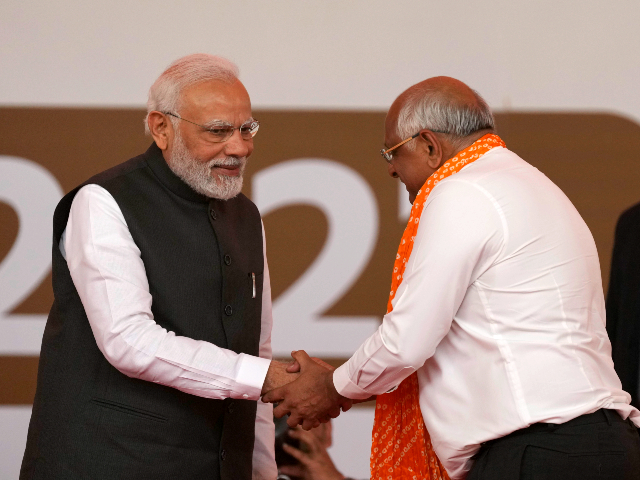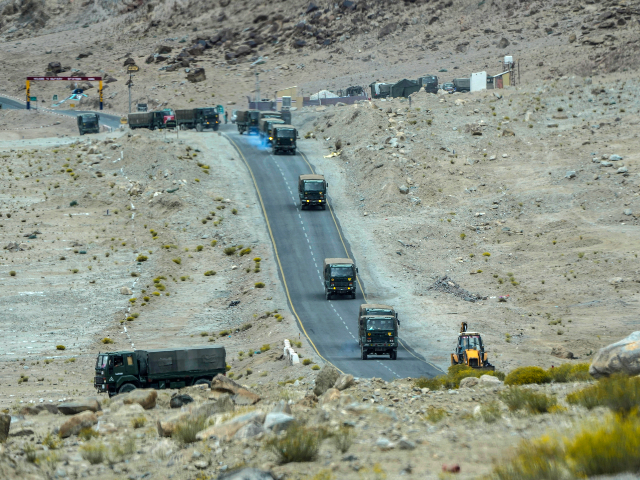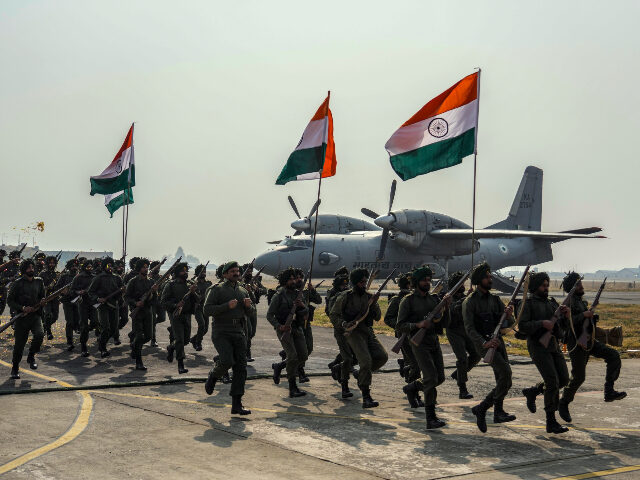India’s top diplomat, External Affairs Minister S. Jaishankar, told the nation’s Parliament this week that the government of Prime Minister Narendra Modi has stationed more troops on India’s border with China than ever in response to repeated invasions by the Communist Party’s armed forces.
Jaishankar’s assurances did little to quiet mounting protests from Parliament’s opposition parties, particularly the left-leaning Indian National Congress, which led multiple disruptions during Wednesday’s Parliament session demanding a formal discussion period on the threat from China and for Modi himself to appear and take questions on the issue.
The Chinese People’s Liberation Army (PLA) has dramatically increased its presence in recent years along China and India’s mutual border, known formally as the “Line of Actual Control” (LAC) – most of which lies around occupied Tibet. The two countries dispute exactly where the LAC lies, particularly in India’s Ladakh and Arunachal Pradesh regions, which have hosted multiple battles and melees since 2020.
That year, in June, Chinese troops reportedly attempted to erect tents in India’s Ladakh region, triggering a confrontation in the Galwan Valley that resulted in soldiers beating each other to death with sticks, rocks, clubs, and other rudimentary weapons. The Indian government documented 20 deaths on its side and twice that number of Chinese dead – many of hypothermia and steep falls – but the Chinese government claims to this day that it only lost four soldiers in the encounter.
The Galwan Valley battle has led to multiple similar encounters in which, according to Indian officials, Chinese troops invade India carrying barbed-wire-wrapped sticks and attack Indian forces. The Chinese government has denied any wrongdoing and claims that it is India that keeps illegally encroaching on its territory.
The most recent brawl occurred in Arunachal Pradesh on December 9. Both sides blamed each other for crossing the border inappropriately. While the encounter resulted only in a small number of minor injuries, it has become a major political issue in India as the Congress Party demands Modi take greater action to punish China.

Indian Prime Minister Narendra Modi, left, greets Gujarat Chief Minister Bhupendra Patel during the swearing in ceremony of the later in Gandhinagar, India, Monday, Dec. 12, 2022. (AP Photo/Ajit Solanki)
Confronting Congress’s criticism on Monday, Jaishankar asserted that Modi had deployed more troops to the border than any other previous leader.
“Today we have a deployment of the Indian Army on the China border that we have never had. It is done in order to counter Chinese deployment which has been scaled up massively since 2020,” Jaishankar said, according to the Times of India. “If we were in denial then how is the Army out there?”
“The Army did not go there because Rahul Gandhi asked them to go,” Jaishankar said, referring to Congress’s most prominent leader. “The Army went there because the Prime Minister of India ordered them to go.”
“If we were indifferent to China then who sent the Indian Army to defend our posts … Why are we pressuring China for de-escalation and disengagement? Why are we saying publicly that our relations are not normal?” Jaishankar asked.
The external affairs minister’s responses to the criticism did little to diminish it.
“The [external affairs minister] EAM says relations with China are ‘not normal’. Then why is our trade dependent on China?” Congress lawmaker Jairam Ramesh asked. “When will the EAM unequivocally declare that restoration of the pre-2020 status quo is our objective?”
The Indian newspaper the Hindu described chaotic scenes on Wednesday at the Lok Sabha, the lower house of Parliament, as Congress and several minor opposition parties demanded expanded debate on the Chinese border dispute.
“Both Houses were in uproar and witnessed multiple disruptions on Tuesday over Congress leaders’ statements,” the Hindu narrated. “Chaos ensued as the Opposition persisted with their demand for a discussion on various issues including the situation between India and China along the border.”
The opposition parties reportedly blocked discussions of other issues and some “walked out in protest.” Outside the Parliament, opposition lawmakers organized a protest in front of a statue of Mahatma Gandhi demanding Modi face the Parliament to answer questions about China’s invasions.
Modi himself has not made any public statements at press time directly addressing China’s invasion of India on December 9, nor has the Indian government summoned the Chinese ambassador, an opposition demand. Last week, Modi’s main international action was to reach out to Russian leader Vladimir Putin, a key ally of China’s, for a phone call in which they reportedly discussed, among other issues, defense cooperation. India relies heavily on Russia for military equipment that could feasibly be used against China on the border.
The Indian government also indirectly addressed the border tensions by announcing a series of new infrastructure projects along the border connecting villages through tunnels and new highways, making military deployment easier in the region.

Indian army vehicles move in a convoy in the cold desert region of Ladakh, India, Tuesday, Sept. 20, 2022. Nestled between India, Pakistan and China, Ladakh has not just faced territorial disputes but also stark climate change. (AP Photo/Mukhtar Khan)
China has invested heavily in similar projects. A report published this week by the Australian Strategic Policy Institute (ASPI) revealed, through before-and-after satellite images, that China had built complex transportation systems throughout its side of the LAC which has made it much easier to cross into India.
“Prior to this latest wave of construction, there was a small foot track that was probably used by Chinese military patrols or the nomadic herdsmen that live on the plateau,” report author Nathan Ruser explained. “And then in mid-2022, that got upgraded and constructed into a … pretty comprehensive road.”
Indian outlets reported that between 200 and 600 Chinese soldiers crossed into Arunachal Pradesh, India, on December 9. The Indian Army, in its statement on the incident, did not estimate the number of Chinese forces that crossed the border but ensured the public that they had met a “firm and resolute” response from Indian forces that pushed them off Indian land.
The Chinese Foreign Ministry and Defense Ministry both acknowledged the incident but offered few details. The Defense Ministry claimed the Indian soldiers had crossed into China, prompting the clash, while a Foreign Ministry spokesman insisted that the situation on the border was “stable,” without elaborating.

COMMENTS
Please let us know if you're having issues with commenting.